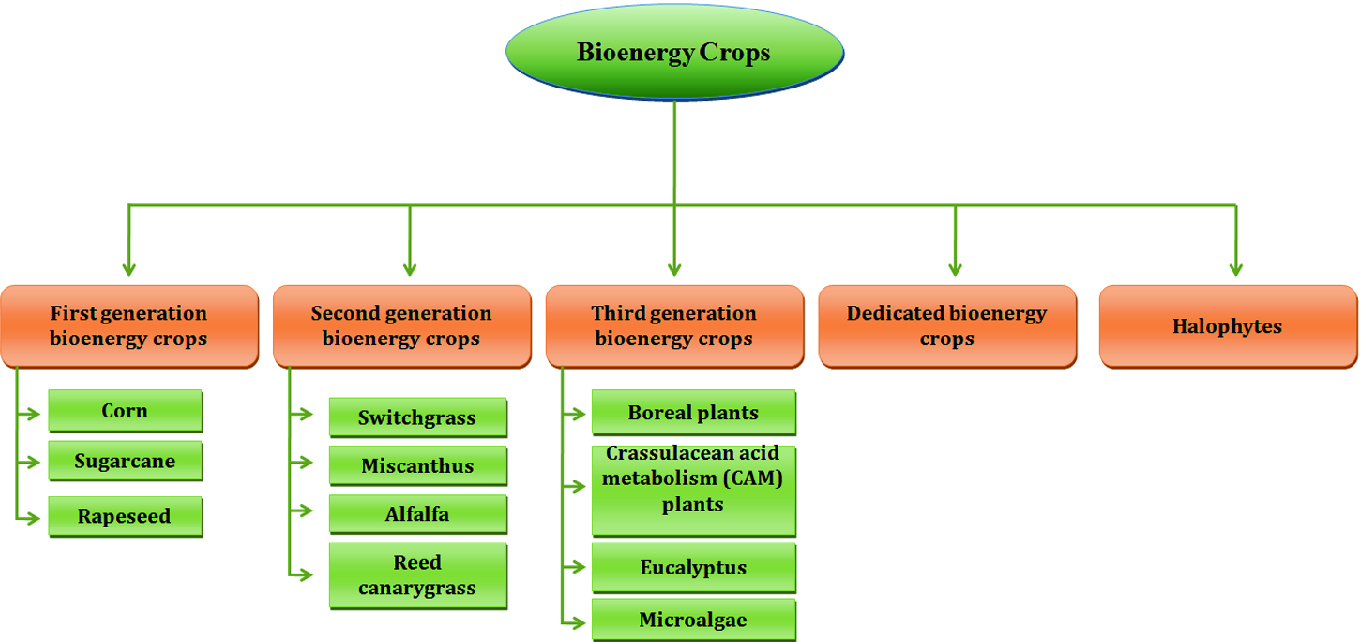Ahmedabad
(Head Office)Address : 506, 3rd EYE THREE (III), Opp. Induben Khakhrawala, Girish Cold Drink Cross Road, CG Road, Navrangpura, Ahmedabad, 380009.
Mobile : 8469231587 / 9586028957
Telephone : 079-40098991
E-mail: dics.upsc@gmail.com

Bioenergy Crops
News: A new study has found that converting annual crops to perennial bioenergy crops can induce a cooling effect on the areas where they are cultivated.
Details:
• The researchers simulated the biophysical climate impact of a range of future bioenergy crop cultivation scenarios. Eucalyptus, poplar, willow, miscanthus and switchgrass were the bioenergy crops used in the study.
• The study also demonstrated the importance of the crop type choice, the original land use type upon which bioenergy crops are expanded, the total cultivation area and its spatial distribution patterns.
• Cultivation area under bioenergy crops occupies 3.8% ± 0.5% of the global total land area, but they exert strong regional biophysical effects, leading to a global net change in air temperature of −0.08 ~ +0.05 degrees Celsius.
• Global air temperature will decrease by 0.03~0.08 °C, with strong regional contrasts and inter-annual variability, after 50 years of large-scale bioenergy crop cultivation.
• Large-scale bioenergy crop cultivation with carbon capture and storage (BECCS) has been identified as a major negative emission technology (NET) for removing CO2 from the atmosphere.
• Large-scale bioenergy crop cultivation induces a biophysical cooling effect at the global scale, but the air temperature change has strong spatial variations and inter-annual variability.Temperature changes in the bioenergy crop scenarios may have very large spatial variations and important climate teleconnections to other areas of the globe.
• Strong cooling effects in Eurasia, between 60°N and 80°N, may protect permafrost from thawing or reduce methane emissions from wetlands.Permafrost is any ground that remains completely frozen—32°F (0°C) or colder—for at least two years straight.
• Cultivating eucalypt shows generally cooling effects that are more robust than if switchgrass is used as the main bioenergy crop, implying that eucalypt is superior to switchgrass in cooling the lands biophysically.
• Cooling effects are more for eucalypt and the greatest warming effects are seen for switchgrass.
• Replacing forests with switchgrass not only results in biophysical warming effects but could also release more carbon through deforestation than converting other short vegetation to bioenergy crops.
| Bioenergy Crops • Crops from which Biofuels are produced or manufactured are called Biofuel crops or Bioenergy Crops. “Energy crops' is a term used to describe biofuel crops. • Wheat, corn, main edible oilseeds/edible oils, sugarcane, and other crops are among them. • Biofuels have a number of advantages over fossil fuels, including the ability to burn cleaner and emit fewer pollutants and greenhouse gases, such as carbon dioxide, into the sky. They're also environmentally friendly, and energy corporations frequently mix Biofuels with gasoline. |

Address : 506, 3rd EYE THREE (III), Opp. Induben Khakhrawala, Girish Cold Drink Cross Road, CG Road, Navrangpura, Ahmedabad, 380009.
Mobile : 8469231587 / 9586028957
Telephone : 079-40098991
E-mail: dics.upsc@gmail.com
Address: A-306, The Landmark, Urjanagar-1, Opp. Spicy Street, Kudasan – Por Road, Kudasan, Gandhinagar – 382421
Mobile : 9723832444 / 9723932444
E-mail: dics.gnagar@gmail.com
Address: 2nd Floor, 9 Shivali Society, L&T Circle, opp. Ratri Bazar, Karelibaugh, Vadodara, 390018
Mobile : 9725692037 / 9725692054
E-mail: dics.vadodara@gmail.com
Address: 403, Raj Victoria, Opp. Pal Walkway, Near Galaxy Circle, Pal, Surat-394510
Mobile : 8401031583 / 8401031587
E-mail: dics.surat@gmail.com
Address: 303,305 K 158 Complex Above Magson, Sindhubhavan Road Ahmedabad-380059
Mobile : 9974751177 / 8469231587
E-mail: dicssbr@gmail.com
Address: 57/17, 2nd Floor, Old Rajinder Nagar Market, Bada Bazaar Marg, Delhi-60
Mobile : 9104830862 / 9104830865
E-mail: dics.newdelhi@gmail.com